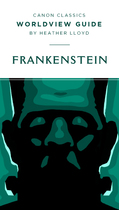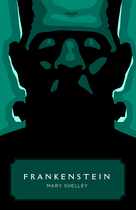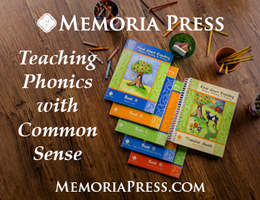Canon Press has published unabridged editions of 47 classic literary works. They also publish a growing line of companion Canon Classics Worldview Guide booklets for many of these literary works. As I write this review, 33 Worldview Guides are available.
Some of the literary works that have both the unabridged book and a Worldview Guide are Adventures of Huckleberry Finn, Frankenstein, Macbeth, Dracula, Hamlet, The Iliad, The Odyssey, Moby-Dick, Much Ado About Nothing, Narrative of the Life of Frederick Douglass, Othello, The Adventures of Tom Sawyer, The Scarlet Letter, War and Peace, and The Secret Garden. While literary works might be read by younger students, the Worldview Guides seem best for students in eighth grade or above.
Literary works are not simply reproductions of earlier versions. They have been nicely formatted for readability, including sufficient space between the binding and the inner column edge of the text—a problem I’ve encountered more than once on reprints of older books. While they are trade-size paperback books, their covers are printed on textured stock that seems to provide more flexibility and ease of handling.
 The Worldview Guides are small booklets of about 40 pages each. While Worldview Guides are written by different authors, they all follow the same format. The first four sections should either be read by students or presented in a lecture before students start reading the literary work. These four sections are: “Introduction,” “The World Around” —historical events happening at the time the literary work was published, “About the Author,” “What Other Notables Said”—a few pages of interesting commentary from the past regarding the work and/or the author.
The Worldview Guides are small booklets of about 40 pages each. While Worldview Guides are written by different authors, they all follow the same format. The first four sections should either be read by students or presented in a lecture before students start reading the literary work. These four sections are: “Introduction,” “The World Around” —historical events happening at the time the literary work was published, “About the Author,” “What Other Notables Said”—a few pages of interesting commentary from the past regarding the work and/or the author.
The next section, “Plot Summary, Setting, & Characters,” might be read in advance, saved for later, or skipped altogether depending upon the difficulty of the literary work and the abilities of students.
The remaining sections are probably best used after students have completed their reading. These sections are: “Worldview Analysis,” “Quotables”—some key quotes selected by the author of each Guide, “21 Questions for Discussion,” “Review of the Five Elements of a Novel,” and “End-of-Book Test.”
“Worldview Analysis” and “21 Questions” are the largest sections within each Worldview Guide. The worldview analyses for the literary works weave together literary analysis with worldview perspectives—the worldviews of the author or those evidenced in the literary work in contrast to a Christian worldview—ultimately bringing in some present-day life applications. The “21 Questions” likewise involve both literary analysis and worldview, but literary analysis dominates. You might find it more useful to jump into some of the discussion questions as they come up in the reading, but that’s up to you. Suggested responses follow immediately after each question. This might be problematic if students simply parrot answers in the guide. Some answers might themselves prompt extended discussion, but I suspect that won’t usually be the case. I recommend that you have students set aside the guides for the discussion most of the time.
The section, “Review of the Five Elements of a Novel,” is almost identical in each Worldview Guide. It has four sections: Setting & Characters, Plot, Conflict and Themes. All except the list of themes in the book is essentially the same. The section is introduced with the instruction: “Master what you have read by reviewing and integrating the five elements of this classic.” It is up to parents or teachers to determine what form the study and response should take. For example, the directions for the first section read: “Be able to compare and contrast the personalities (including strengths, weaknesses, and mannerisms) of each character. How does the setting affect the characters?” This and other questions in this section could be the topics for extensive essay assignments or for discussions. Parents or teachers might also decide to use the questions one way or another depending upon their own preparedness to discuss the literary work.
The End-of-Book Test always has three sections: one section on the novel or play, the second on the plot, and the third on worldview. While most questions can be answered with a sentence or short paragraph, the worldview questions might require lengthier responses—and they are weighted the most heavily.
The content is excellent, but these studies do require some preparation and teaching. The Worldview Guides were intentionally designed for flexibility so that they might be used in all settings. A teacher already familiar with the literary work might present a lecture based on the first four sections of the Worldview Guide while a teacher unfamiliar with it might read along with students or assign reading from the guide. If you have limited time, you might select questions rather than use all of them. You might have a discussion about the “Five Elements of a Novel” as evidenced in this work, or you might assign one or more student essays covering the material. If students expend a great deal of effort on this section, you might use only the worldview questions from the test rather than the entire test. Additionally, a self-directed student might even read through the guide and work through most of it on his or her own, although group discussion will generally be much more beneficial. How you choose to use the different elements of the Worldview Guides will determine how long each study will take to complete.
For homeschoolers, a group class might be the most practical way to use these courses, but a parent working one-on-one with their own teenager can be equally effective. As the list of available Worldview Guides grows, you might find it practical to choose a number of the literary works and their companion guides to create your own high school literature courses.Canon Press has already created two bundles of some of the Worldview Guides: the American Lit Worldview Guide Starter Bundle and Classic Lit Worldview Guide Starter Bundle.











